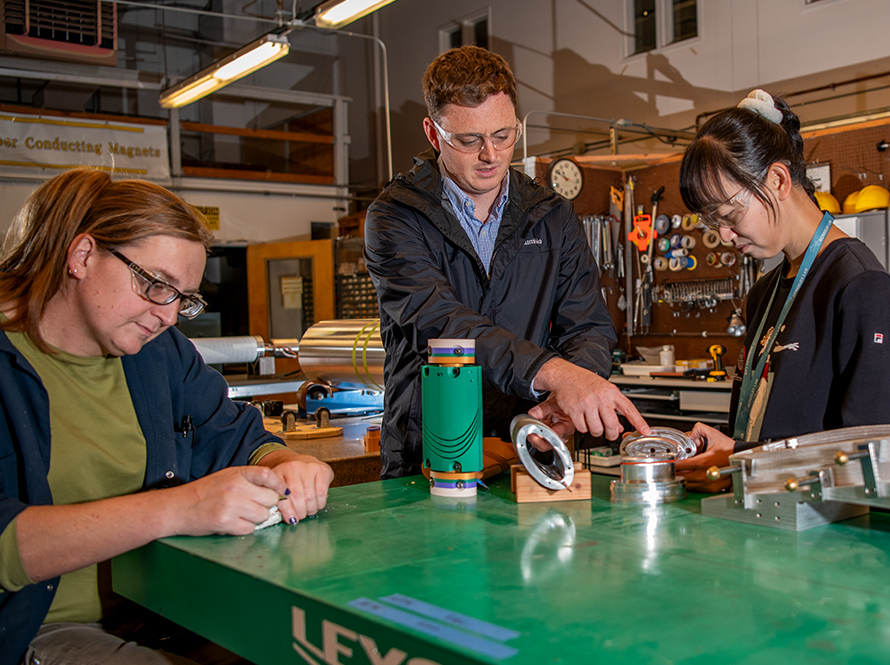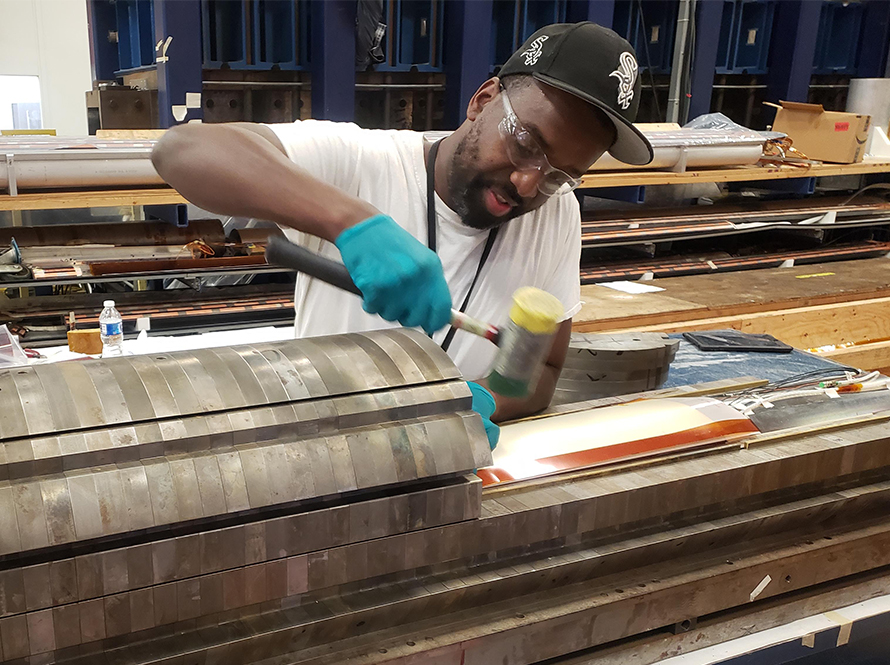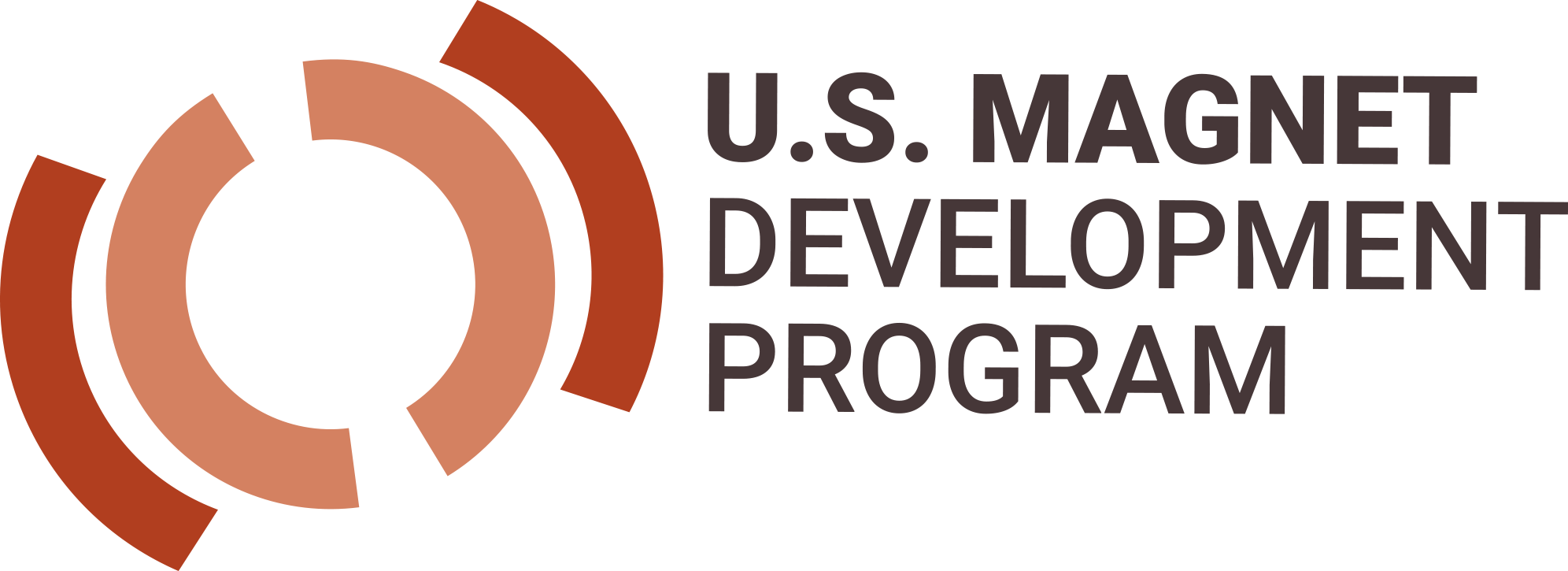
Staff scientist Lucas Brouwer (middle) discusses the design and fabrication of elliptical canted cosine theta magnets with postdoctoral scholar Yufan Yan (right) and technician Simone Johnson (left).
Testing HTS-based dipoles in the bore of an Nb₃Sn dipole magnet is the most cost-effective means of probing HTS accelerator magnet technology at higher magnetic fields. To date, the USMDP has focused on developing the core elements of a hybrid magnet: a) stress-managed Nb₃Sn magnet technology that enables large-bore, high-field HTS dipoles, exemplified by the Stress-Managed Cosine-Theta (SMCT) and Canted Cosine Theta (CCT) magnet designs; and b) HTS accelerator magneNt technology with REBCO and Bi2212 cables. Our goal now is to integrate these hitherto-separate thrusts in working hybrid accelerator magnets.
Thus we have a twofold ambition. We wish to bring our new generation of stress-managed LTS magnets to fruition; they serve as outstanding demonstrators for a muon collider, as well as workhorse magnets to develop and demonstrate hybrid magnet technology. We also aim to further advance HTS accelerator magnet technology for use in high magnetic fields.
The development of stress-managed large-bore magnets is central to the USMDP mission. The large-bore challenges conventional cos-theta magnet designs at high field, and hence is an excellent proving ground for stress management. Successful demonstration of reliable large-bore ≧120 mm) dipole operation in the 12-14 T range, without exhibiting degradation due to strain and operational cycling, is a major milestone for the program.

Fermilab technician Martel Walls working on a mirror magnet assembly to test “QCD,” a quench current boosting device.
Bi2212 conductor and magnet performance continue to evolve based on a deeper understanding of the material. The program will now focus on developing and testing Bi2212 dipoles in high magnetic fields. The challenges of quench protection and strain management will need to be addressed.
The class of HTS materials called REBCO offers potentially the highest field and temperature performance, which may provide unique opportunities for HEP applications. The tape architecture, combined with the intrinsic superconductivity and mechanical anisotropy of the material, introduces unique challenges for both magnet design and manufacture and magnet protection. The opportunity, however, is tremendous, due to the strong pull from the fusion community, where the promise of high-field, compact fusion devices is fueling extraordinary investments in REBCO conductor development in industry.

